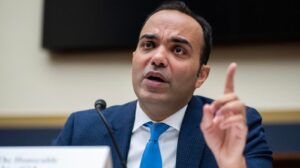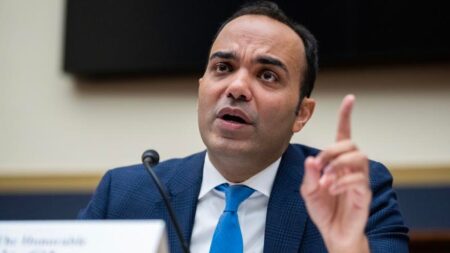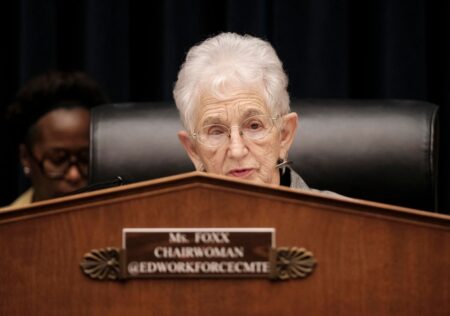In a major update, the Education Department has restored online access to a key application for borrowers looking to continue pursuing student loan forgiveness as certain programs remain cut off.
For the last two months, there has been no online access to the application for Income-Driven Repayment. This has prevented borrowers impacted by recent court rulings from applying to change their repayment plan. And it has also interfered with borrowers’ obligations to recertify their income annually for existing IDR plans.
IDR is a collection of individual plans that base monthly payments on a borrower’s income, with the potential for student loan forgiveness after a certain period of time (typically, 20 or 25 years). IDR is also a critical component of the Public Service Loan Forgiveness program, or PSLF, as most borrowers must be enrolled in an IDR plan in order to make qualifying PSLF payments. PSLF can allow for student loan forgiveness in as little as 10 years for borrowers who work in the nonprofit or public sectors.
But following a nationwide injunction blocking President Joe Biden’s newest IDR program called the SAVE plan, the Education Department took down the online IDR application to update its internal systems to comply with the court order. With online access to the IDR application now restored, borrowers have a bit more wiggle room to stay on track for student loan forgiveness.
SAVE Plan Forbearance Has Paused Student Loan Forgiveness For Many Borrowers
More than eight million borrowers who had enrolled in the SAVE plan or were converted from REPAYE, the predecessor IDR plan, have been forced into a forbearance since August as a result of the recent injunction ordered by the 8th Circuit Court of Appeals. During the forbearance, borrowers will not have to make payments on their federal student loans, and their balances will not accrue interest. However, the forbearance period won’t count toward student loan forgiveness under either IDR or PSLF, effectively pausing borrowers’ progress toward debt relief.
This is particularly frustrating for borrowers who are nearing the end of their student loan forgiveness term. This could include borrowers who had been repaying their loans under an IDR plan for 20 or 25 years, or stand to benefit from the IDR Account Adjustment, a related initiative that can credit borrowers retroactively with time toward IDR loan forgiveness. This also would include borrowers on track for PSLF, which provides for faster debt relief in as little as 10 years.
The Education Department had previously suggested that borrowers looking to resume progress toward student loan forgiveness under IDR or PSLF could apply to switch to a different repayment plan. But with the online IDR application down, borrowers’ only option had been to use a paper application, and the department had said that there was a systemwide processing pause on new IDR requests.
Online IDR Application Is Back, Giving Borrowers Chance To Resume Student Loan Forgiveness Progress
As of last week, the Education Department has now restored access to the online IDR application.
“Borrowers may apply for IDR plans and/or to consolidate loans by using the online applications” available at StudentAid.gov, says updated department guidance.
Borrowers can apply to the SAVE plan, but as long as the program remains blocked, it’s inaccessible. With the ICR and PAYE plans no longer available, that effectively means there is only one other IDR plan available to borrowers looking to leave the SAVE plan forbearance: Income-Based Repayment, also known as IBR.
“Borrowers should note that, under the court’s injunction, no new enrollments are being accepted for the Pay As Your Earn (PAYE) or Income-Contingent Repayment (ICR) Plans,” explains the department. But IBR remains available. Switching to IBR would allow borrowers to resume progress toward student loan forgiveness under both IDR and PSLF.
Some borrowers are reporting that the online tool that links to the IRS for purposes of importing their income information may not be functioning. As a result, borrowers may need to manually upload their income documentation as part of the online IDR application process.
Switching From SAVE Plan Forbearance To IBR May Not Make Sense For All Borrowers
The main benefit of applying to leave the SAVE plan forbearance for IBR is that it would allow a borrower to effectively “un-pause” their student loan forgiveness progress under IDR plans and, if applicable, PSLF. Given that the SAVE plan forbearance could last a year, this may matter to people, particularly those who are approaching the end of their loan forgiveness term.
But for other borrowers, the calculus may be more complicated. First, IBR is a more expensive plan than SAVE, and in some cases, the difference in the monthly payment amounts could be significant. A single borrower making $60,000 annually would pay around $220 per month under SAVE, but would pay around $470 per month under IBR.
In addition, the IBR plan does not have the interest waiver benefits that the SAVE plan has. This means that loan balances may increase over time due to negative amortization if payments aren’t high enough to cover the interest that’s accruing. And borrowers who switch to IBR, and then subsequently apply to change to a different repayment plan, could experience interest capitalization, where all of the outstanding interest gets added to the loan principal.
“We encourage borrowers to review the specifics of each IDR plan in order to make the best choices for their circumstances,” says department guidance, noting the possible risk of interest capitalization under the IBR plan.
Borrowers on track for PSLF may have other options that don’t require that they switch to IBR. For example, PSLF borrowers could switch to a 10-year Standard plan if they are eligible, which counts toward student loan forgiveness under PSLF regulations. Or they could remain in the SAVE plan forbearance and subsequently apply for PSLF Buyback, although this comes with important restrictions.
Borrowers Could Receive Student Loan Forgiveness Credit During Processing Period
The Education Department warns borrowers to still expect lengthy processing delays, even though the online IDR application is back up.
“Borrowers should expect a lengthy delay in processing of applications, especially for borrowers applying for SAVE/REPAYE,” says the department. “We do not currently have an estimate of how long this will take.”
One possible bright spot with the delays is that borrowers who apply to change IDR plans could be placed in a processing forbearance for up to 60 days, which can count toward student loan forgiveness under both PSLF and IDR. But interest will accrue during that time.
“If servicers need time to process a borrower’s IDR application, servicers will move the borrower into a processing forbearance for up to 60 days,” says the department. “Interest accrues during this short-term processing forbearance, and it is eligible for PSLF and IDR for up to 60 days.”
But if the IDR application isn’t processed within 60 days, the borrower will then be placed in a general forbearance again. This will pause interest accrual, but the period won’t count toward student loan forgiveness.
Read the full article here











